
By Ilma Hackett (Balnarring and District Historical Society)
This was it; the perfect location for their club house. Ever since the Harley Davidson Club had returned from their trip to South Australia, members had been looking for a beach setting similar to the one at Sellicks Beach where the South Australia club met. Balnarring Beach, ticked all the boxes.
Beginnings
The Harley Davidson Motor Cycle Club was one of a number of motor cycle clubs that had sprung up around 1920. Motorcycles had become popular after World War I as an efficient and relatively inexpensive form of transport for working men. Developed during the war years as a form of military transport they were promoted for civilian use after war’s end. With a side car attached they were used as a work vehicle or a means of transport for a small family. Moreover, there was the sports aspect. The motorcycle could be raced and used competitively. The number of enthusiasts grew and clubs formed.
The inaugural meeting of the Harley Davidson Club took place at the Ritz Café in Lonsdale Street on the evening of 5 February, 1924. Forty people attended. A name for the club was decided and office bearers elected. The first president was Mr Peers and Mr Cripps was elected the first Club Captain. The Club’s opening event was a run to Barwon Heads in which mostly cycles with side cars participated. During the following months reliability trials on public roads throughout the state took place often during the winter months. Some were twenty-four-hour, non-stop affairs. Over the summer of 1925-26 a Christmas tour to Adelaide was organised. Thirty-one sidecars and two solo cycles took part. The South Australian Harley Club had a club house at Sellicks Beach near Adelaide where races and trials took place on the wide stretch of beach and families enjoyed the beach setting. The Victorian group returned with the goal of finding a site close to a suitable sandy beach and at a convenient distance from the city.
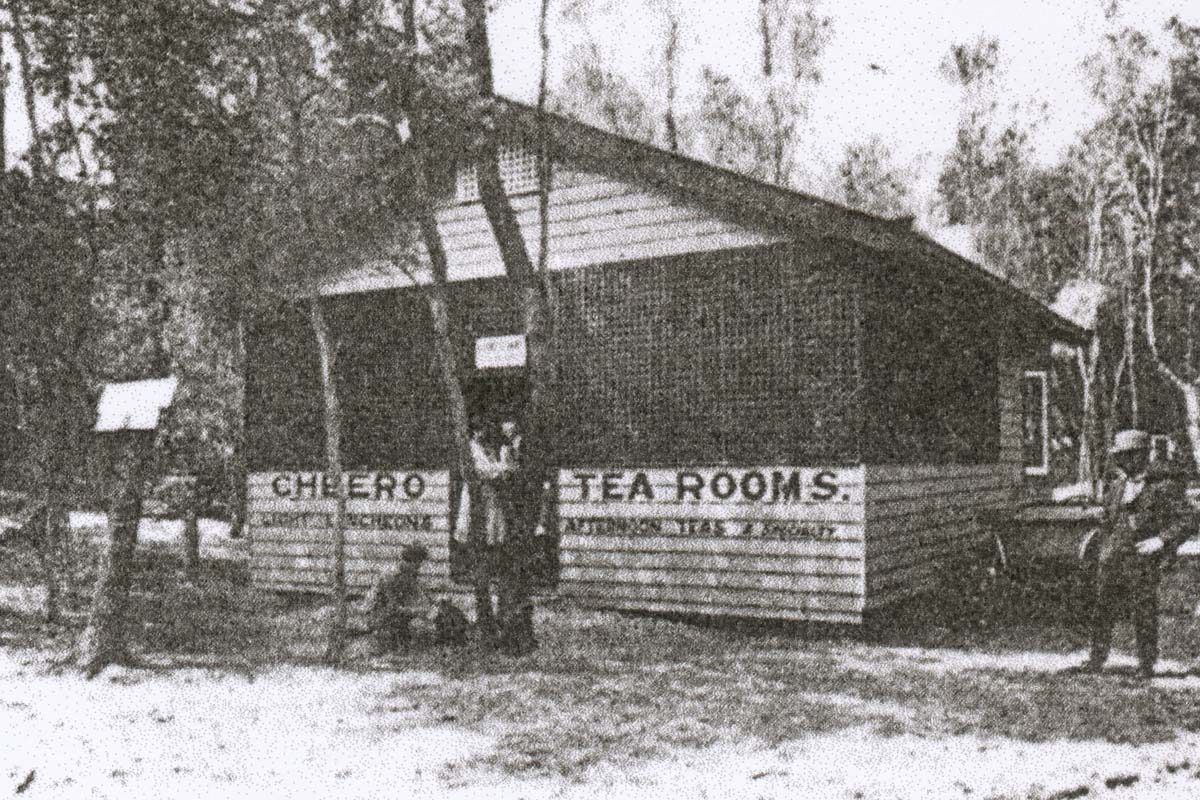
A Club House at Balnarring Beach
Land at Tulum or Balnarring Beach was being vigorously advertised in the early 1920’s. Ever since the road had been put through to the coast and a bridge built across the creek, the beach had been a popular destination for picnickers, fishermen and campers. It had a small, sheltered cove between two low headlands and also a long, sandy beach backed by low dunes and a shelter of trees. The popularity of the place was increasing year by year. Subdivision had opened up land for purchase and after World War I lots sold quickly. Tulum had a store that was open during the summer and, from 1923, a well-patronised tea rooms. The Cheero Tea Rooms became a popular destination for Harley Club members on a day’s run from Melbourne. In 1926 two lots on the rise of land to the north of the bridge were bought by Milledge Bros (importers of the Harley- Davidson motorcycles). Plans were drawn up by R, Myers, the club’s president at the time, and work began to build a weatherboard club house. Money was raised mainly from football sweeps among the hundreds of motor cyclists who congregated along Elizabeth Street on a Friday night. Work was done at weekends throughout winter by volunteers. Member Reg Bennett recalled riding down to a working bee carrying timber in his side car. By the end of the year the first section had been completed.
An article in The Herald newspaper of 8 December, 1926 covered the opening. Mr Cottman, of Milledge Bros, declared it open. Presentations were made and an award given to the club captain, Mr Arthur Hauser, who had recently won a hill climb. The organisers had wanted a large turnout and the opening attracted more than 110 motorcycles and side cars, three charabancs and thirty cars. Membership had grown rapidly during 1926 and the Australasian, (23 October, 1926) reported that the club had 200 members with an average increase of twelve new members each month.
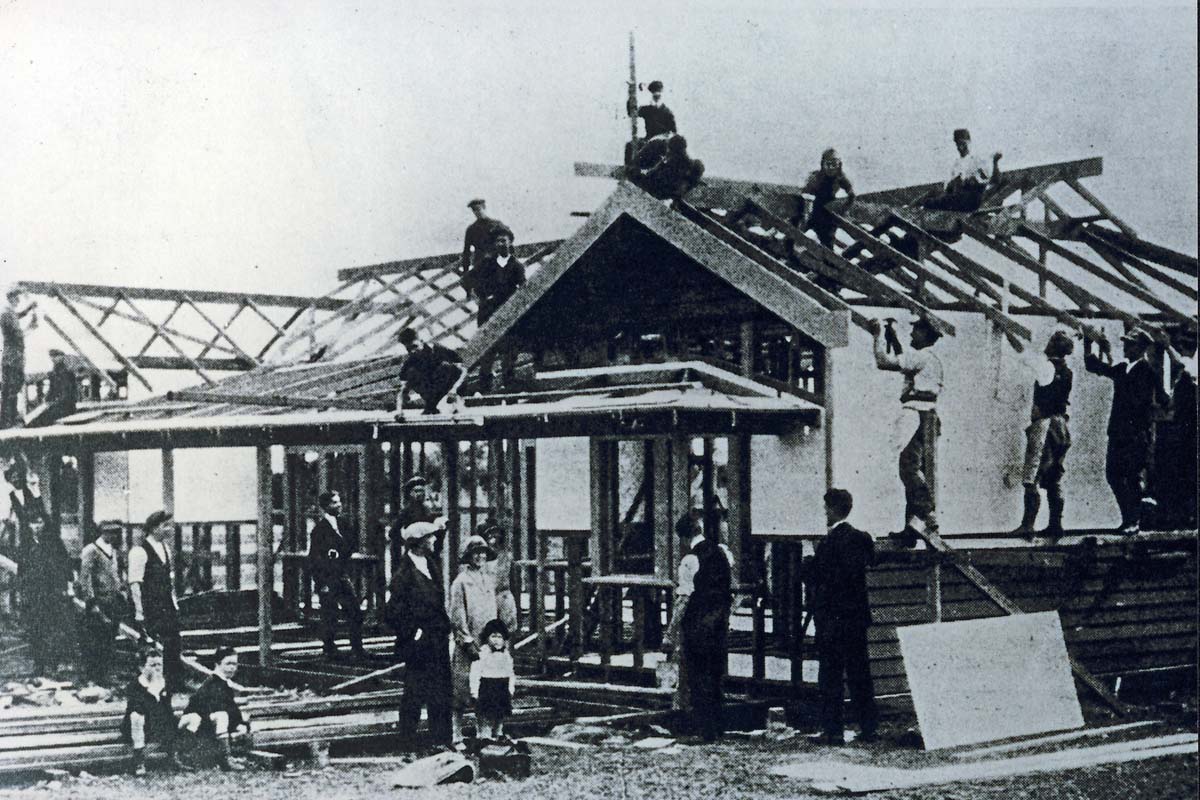
The club house was intended as a centre where members and their families could come at weekends and holidays for both social and sporting events. It was also a place where trophies could be displayed. The manufacturers of the Harley Davidson were full of praise for this new club and the work done by its members. It gave the club publicity in its magazine, The Harley Davidson Enthusiast. This new club won the organisation’s trophy for the club doing “most number of miles on social runs over the year”. Seventy-five countries had competed.
Ten months after the club house was opened work began on extensions which were finished in time for the official opening held on 18 December, 1928. The building consisted of two smaller rooms used as bedrooms, a larger space divided into a dining/living area, a general hall and what was described as an ‘up-to date- kitchen’ and ‘fully equipped bathroom’ area. Two toilets, one for men and one for women, were outside. The Adelaide Advertiser described it as “the best of its kind in Victoria”, adding that it was “wonderfully fitted with radio”. On a less happy note, the club house was broken into that year with £50 worth of things stolen, including a gramophone and records. Carpet, bedding and kitchen utensils also disappeared.

The Club was now known as the Harley Club of Victoria. The name change occurred in July, 1928. It wasn’t a club exclusively for owners of Harley Davidson machines; all motorcycle owners were invited to join, as they had been since the beginning. The Cheero Tea Rooms had become a favourite meeting place for club members. Maud Strain provided cooked meals for them during working bees and she had fitted the shop with tables and chairs, making it more of a cafe. Later the club’s Wings insignia was fixed above the doorway where it remained for many years.
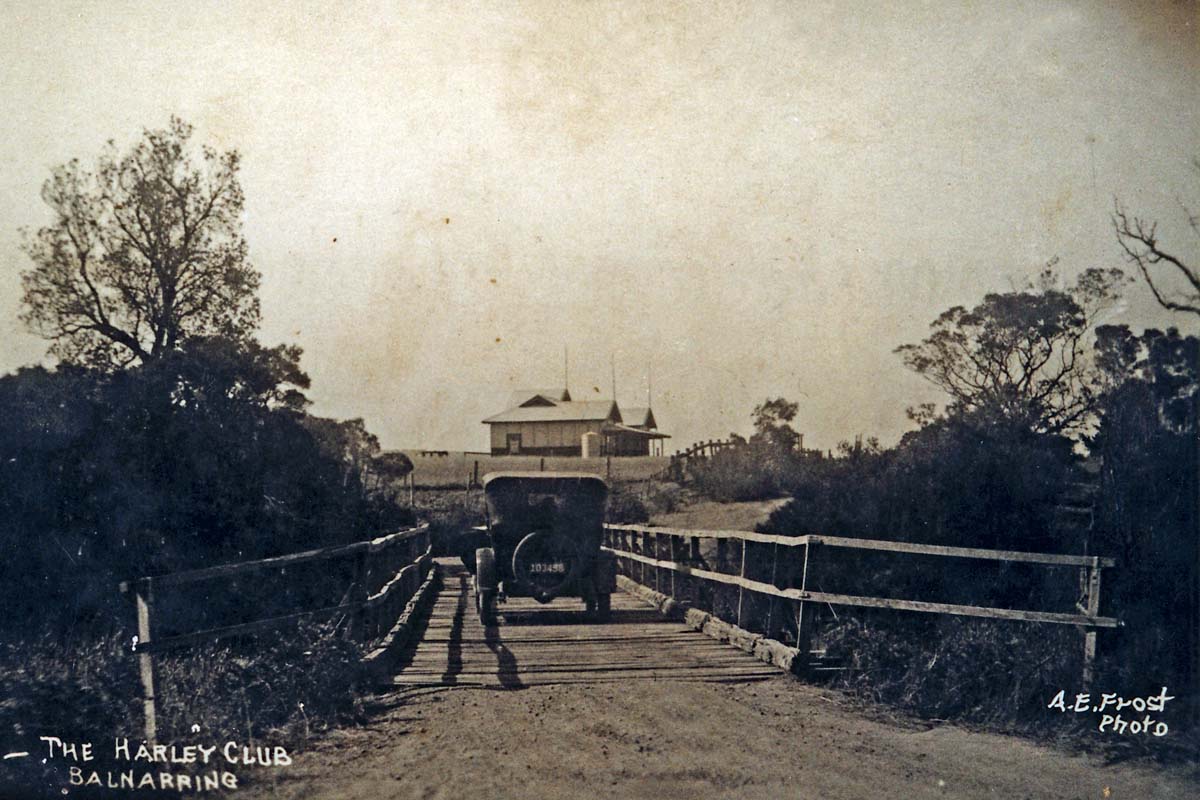
To race or not to race on the beach
The first of the beach races was organised in 1927. It took place along the ‘fine stretch of sandy beach admirably suited to racing’, the long straight section between Balnarring and East Balnarring (later Somers). It was a highly successful day but the races immediately raised opposition from property holders and other beach goers. Newspapers in November 1927 were full of letters of complaint. The motor cyclists “monopolised the beach”. “The nuisance has become intolerable both for noise and speeding besides being highly dangerous to picnickers”. Someone pointed out that motorists from Melbourne, on a Sunday drive, were denied access to the beach from the continuous stream of motor cycles racing, joy riding and stunting throughout the whole day. People making the complaints pointed out that they objected not to the cyclists themselves but to the misuse of the beach.

The club responded, pointing out that it had been given council permission to hold the races and that speeding and stunting had not been done by members of its club as there were strict guidelines. The club also pointed out that races had taken place on the beach five miles from the Tulum campgrounds and community. However this beach fronted the new community of East Balnarring, later Somers, recently subdivided and opening up. In order to work with the community several club members attended the inaugural meeting of the East Balnarring & Palm Beach Residents Association in 1927 and two of its members were elected to the committee.
The Harley Club organised a monster rally for motor cyclists from all over the state in November, 1928. This attracted two hundred machines and three hundred and fifty people. As well as events for motorcycles the programme included footraces for children and adults on the sand. One hilarious blindfold race for men saw some competitors veering into the sea. The underlying goal of the rally was to show that motor cycling could bring all people together for an enjoyable time. The rally was so popular that another was planned for 1929 to demonstrate to the public what a splendid thing motorcycle club life really was. Although it went ahead with success, complaints against motorcycles on the beach continued to be raised and future use of the beach for racing was banned.
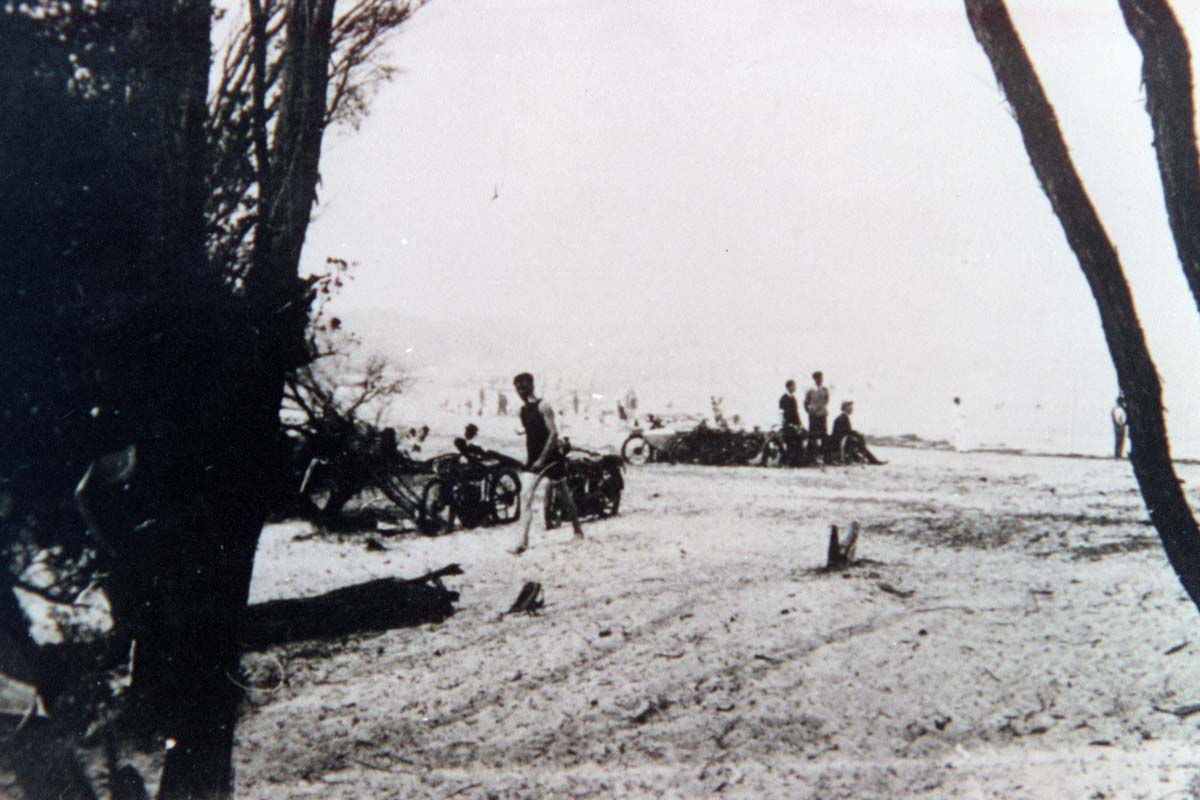
Grass speed tracks and other events
In 1930 permission was given to hold a speed meeting on the open ground at the back of the club house. A track was laid out, four laps of the track being one mile. Local members Frank and Bob Myers also had a track laid out on their farm property at Bittern about eight kilometres away from the club house. Races and scrambles were held at both tracks. These grass speed tracks substituted for beach racing. Twenty-four-hour trials were also held along the unmade back roads in the area. The Harley Club frequently held weekend outings to its Balnarring club house and collective holidays took place at Easter and over long weekends. Longer road events from Melbourne used Balnarring as a half-way point. It was the lunch stop or overnight stop depending on the length of the run. Visiting interstate Harley Clubs were treated to a stay at the beach.
Social events at the Club House were looked forward to with pleasure. These were sometimes run in conjunction with the Foreshore Committee for the whole beach community. In the early days there were monthly dances which were very popular. The Club’s Annual Dinner Dance was the social event of the motorcycle world. All the dignitaries of the Motor Cycle world were invited. Special anniversaries were celebrated. During the summer months games were organised on the beach for adults and children alike. Each Christmas a children’s Christmas party was always held at the club house. Santa, of course, arrived on a motorcycle.
Private events also took place at the Club House; when Dorothy Wallace of Merricks Beach turned twenty-one the club house was made available for her coming-of-age party.
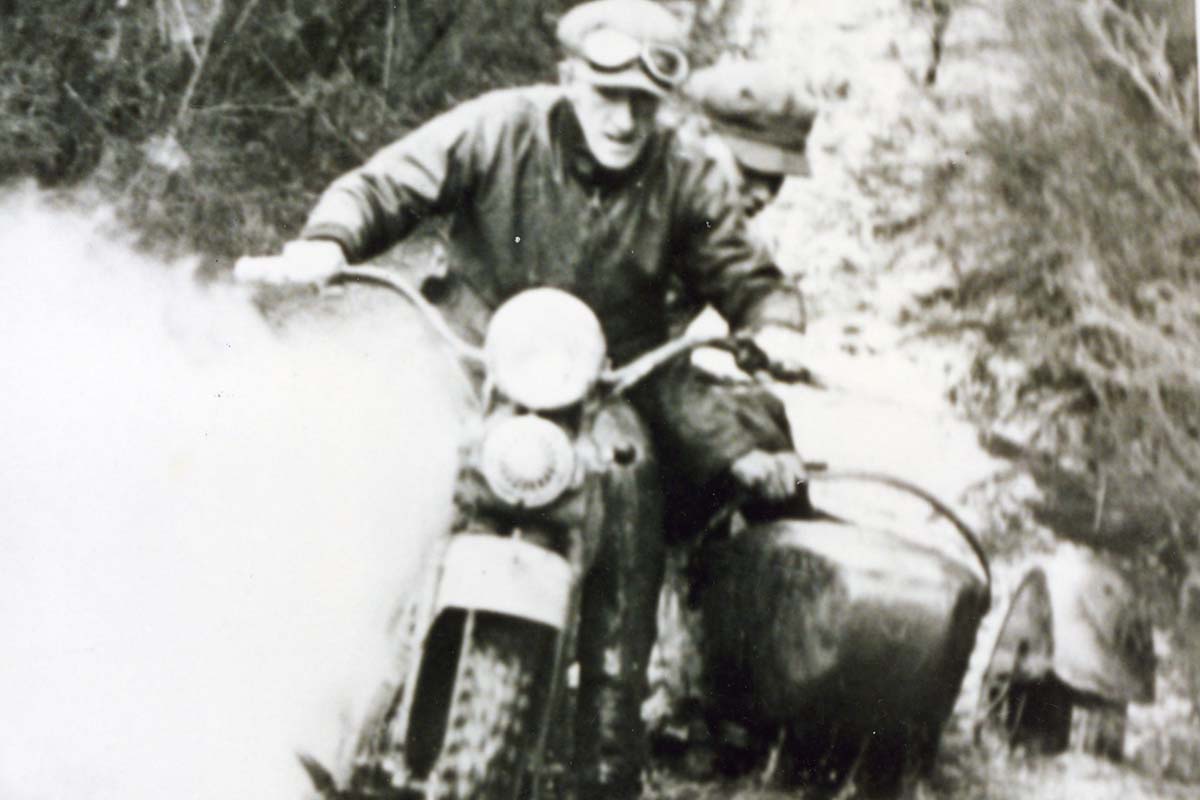
The club was very lucky with its officials and members many of whom had business experience. The Rattray-Wood brothers, Ron and George, joined the club in its early years and took on the roles of treasurer and secretary. They stayed active members for many years.
In 1930 ownership of the land on which the club house stood was in the name of R. J. Rattray- Wood and rented to the Harley Club. The Club remained financially successful over the years and large amounts of money were raised for charity.
With the coming of World War 2 activities scaled back and were limited to scrambles. The Club contributed £100 in war certificates and also made the club house at Balnarring Beach available to military authorities. During the early years of the war the Western Port beaches were fortified against possible Japanese invasion and army units camped in the foreshore reserve.
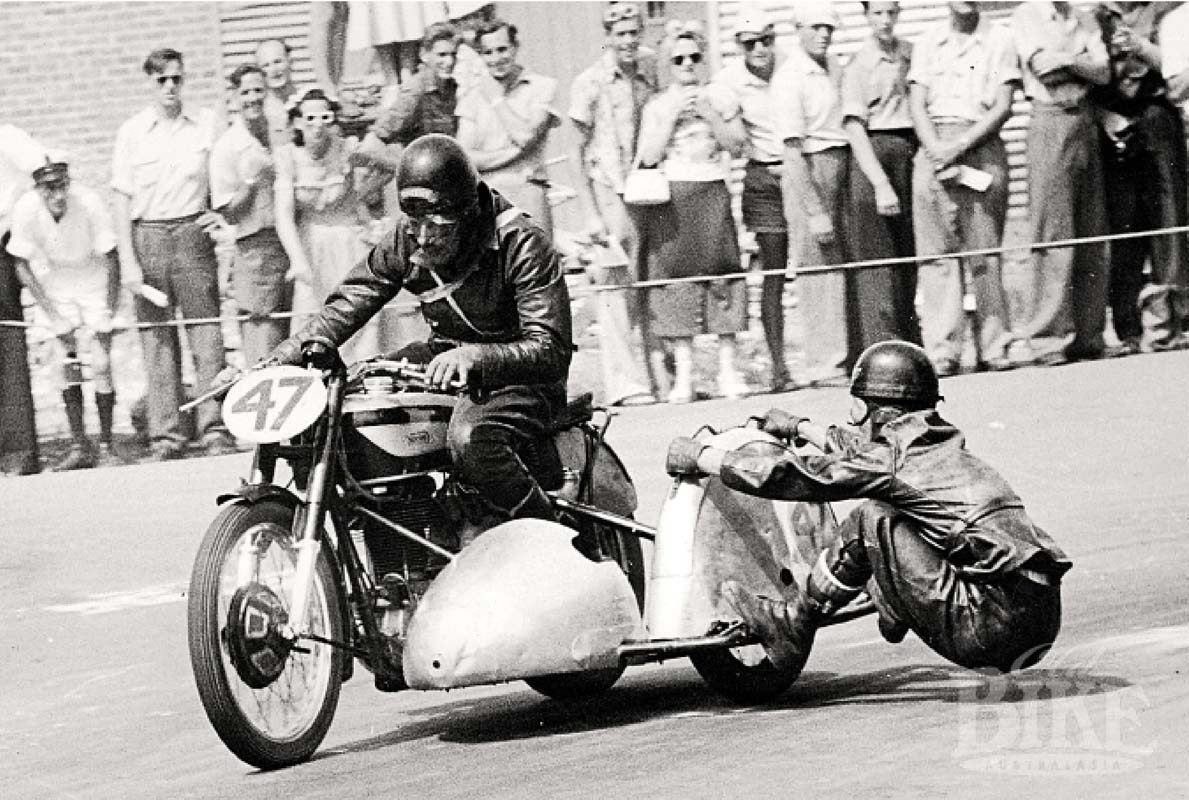
Post war change and Cerberus as a racetrack
In post war years the Harley Club House at Balnarring again became a destination for Harley Club members. Events resumed. A couple of beach races were held which involved just a few motorcycles but the ranger quickly put a stop to them.
However the period after the Second World War brought considerable change. People, in general, were more affluent and motor cars became more numerous. More people could afford to own a car and it became the family vehicle – replacing the motorcycle. A car could carry more people, was more comfortable and had the advantage of being suitable for travelling in all types of weather. Motorcycles were for the enthusiasts.
There were other changes, too, that limited motorcycle sports. Public roads were closed for racing and clubs searched for a suitable stretch of tarmac where races could be held. For three years at the beginning of the 1950s the naval base, Cerberus, provided a racetrack for the Harley Club. Discussions took place between the R.A.N., the Harley Club and the Light Car Club to hold a two-day race meeting at the Base over the weekend of 30 September-1 October, 1950. Cerberus had a system of narrow flat roads and a course was marked out around the Naval Parade Ground, a circuit of 1.55 miles per lap. The Light Car Club decided not to participate but the Harley Club had one hundred Victorians interested in racing plus several riders from interstate. Commodore H.J. Buchanan officially opened the meeting which was a very successful and well-run occasion. The following year there were two restricted race meetings held at the Base, one on 29 January, 1951 and one over the weekend of 14/15 October of the same year. In 1952 Cerberus again hosted a meeting but that was the last. The following year Commodore Buchanan was transferred to the command of HMAS Sydney and without his support no further races went ahead. Money raised from the meetings went to the Base’s chapel
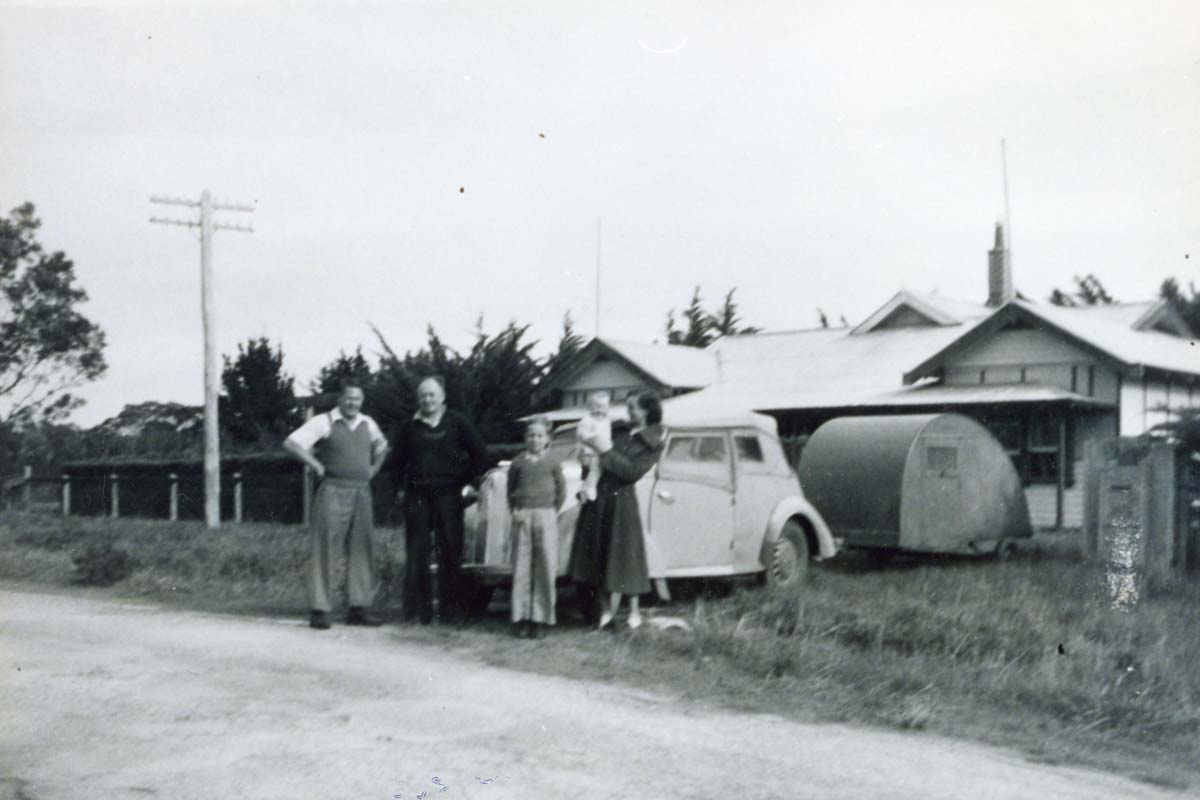
The club house as a holiday centre
There were changes at Balnarring Beach too. Land sales opened up more sites for housing and there was a spate of new houses. Campers returned in numbers.
The Club House was still available for members to use throughout the year and not just for collective gatherings. Individual families could come to Balnarring and, for a small payment to cover the cost of services, they could make use of the main building. Some camped in the grounds. Many remember friendships made with other holiday makers from the nearby foreshore camping grounds and the activities that filled the summer holidays at the time – the open-air picture shows at the campgrounds, the summer carnival, sing-songs and beach races. The tradition of the Christmas children’s party at the beach for Harley families continued. Eight-eight children attended the party of 1960-1. The high cypress hedge surrounding the property was a favourite playground for the youngsters. One person remembers the challenge of trying to make the circuit of the property climbing through the trees. However the number of families using the Club House gradually dwindled.
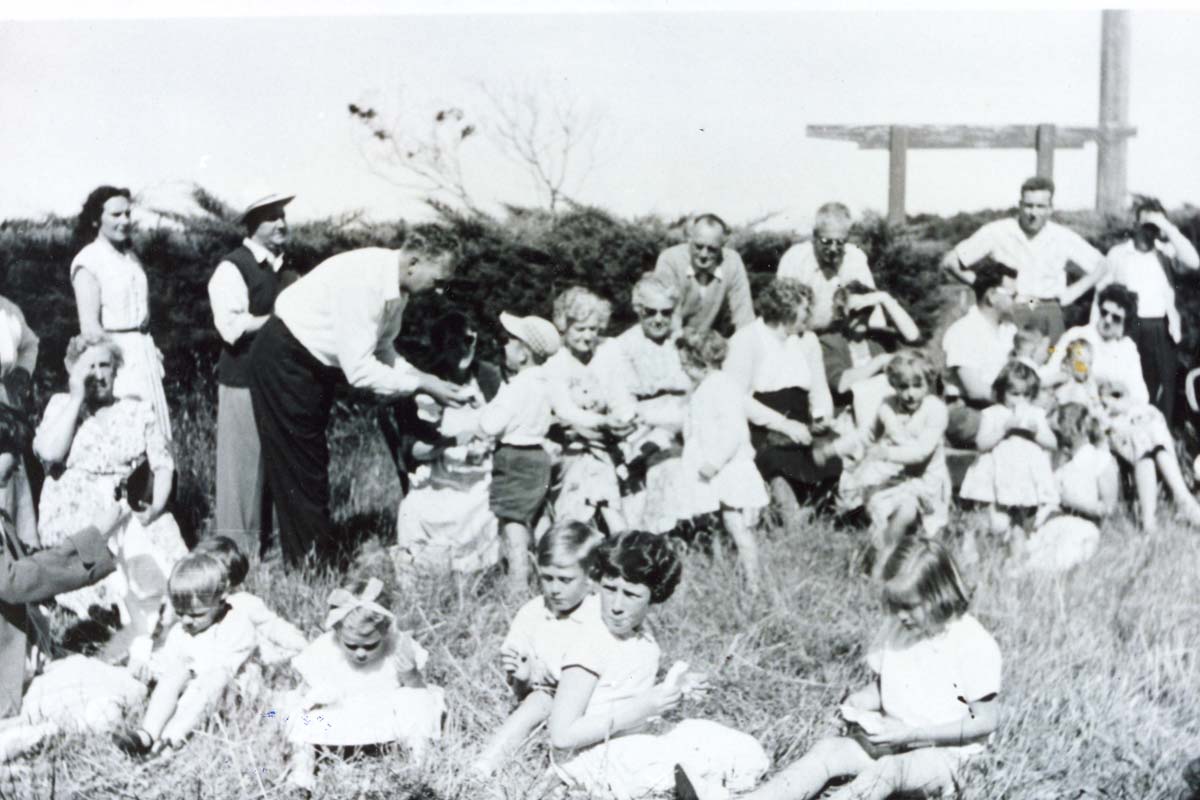
The Rooney’s private holiday house
By the 1980s only one family, the Rooney family, was consistently holidaying at the Harley Club property. Daughter Debbie remembered “it was like having our own private holiday house”. George Rooney was the Club’s Vice President for many years. He and his wife, Phyllis, had been associated with the club since 1949 and, with their three young children, they came to holiday at the Harley Club house each year, camping in the paddock next to the house. They usually came for about six weeks.
Other members came down for special occasions and events but most of the members now lived to the north of Melbourne. The land around the Club House was no longer wide, open paddocks but had become semi-suburban and the roads were mostly macadamised. The area no longer offered the same possibilities for racing and trials as it once had. The focus for the Club’s activities had shifted away from the beach. During the 1990’s the decision was made to look for another site north of the city and to sell off the land at the beach. It was not an easy decision.
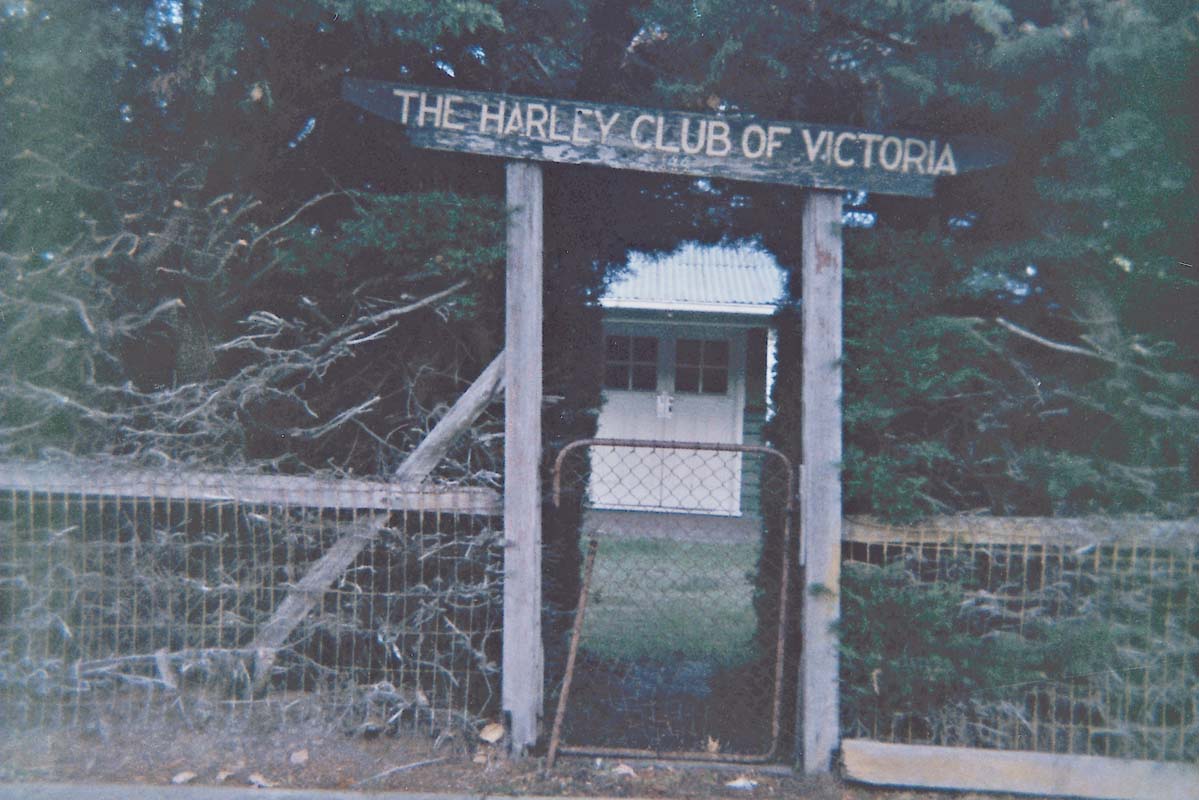
Today
Today the Harley Club House stands on 360 acres next to the State Motorcycle Complex at Broadford. The Club continues to have an enthusiastic group of members. Membership is about 180, down on previous years (at one time it numbered 600) but, as with everything else, COVID has curtailed activities. Both the sporting and social side of the club is still emphasised. It remains family-oriented and caters for a wide group of riders including veterans, juniors and women. Some members enter events in other Victorian centres; some travel interstate for events but most sport takes place at Broadford at the State Motorcycle Complex.
At Balnarring two houses now stand on the former club property. The high cypress hedge that screened both blocks of land is still there. The lots were sold separately and a new home was erected on land where members once camped. The original Club House is a private home. The new owners remodelled the interior but, by and large, retained the external appearance. The old name, “The Harley Club”, which stood above the gateway is echoed in the house’s new name “Harley House”.
REFERENCES
- “The Harley Club of Victoria” – Ian Wisken and Bruce Bennett.
- “Old Bike Australasia” – issue 20.
- Contemporary newspapers.





